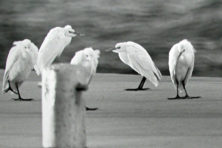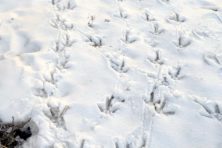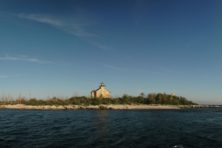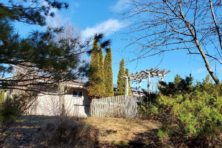Wild Things: It’s Show Time for Fall Birds
- Share
- Tweet
- Pin
- Share

Millions of birds are moving through and into Wisconsin from their summertime homes in Canada, an early start to the fall colors that’ll heat up in the coming weeks.
The diversity of migrant birds, the distances some of them fly and their ability to navigate to their winter homes is hard to fathom.
North winds earlier this week sent some birds packing from Canada, with another north flow expected later this weekend.
Some birds are early migrants, but others — depending on the species — will loaf here for the next few weeks or months, heading south as the temperatures drop and natural foods become harder to find.
Colorful warblers and other songbirds will be abundant this month as they wing their way through, with many heading to Central and South America.
Millions of birds fly overhead in the dark of the night. When the winds fire up from the south, they drop, stop and rest, offering sharp-eyed birders a great opportunity to see and photograph them.
Earlier this week, it was estimated that nearly 15 million birds crossed Wisconsin in a single night, upping the season estimate to more than 230 million. That’s according to an online resource known as BirdCast (birdcast.info/).
The Department of Natural Resources Bureau of Natural Heritage Conservation has a 96-page publication highlighting important migratory bird stopover sites along Lake Michigan, including more than two dozen in Door, Kewaunee and Brown counties. You can see it at widnr.widen.net/s/z5rfnpg5tz.
Lisa Gaumnitz, coordinator of SOS Save Our Songbirds, said the booklet was originally put together to spur planning and protection, but it can also help point people to good places to look for migrating birds.
In the past 50 years, the Cornell Lab of Ornithology estimates that the North American bird population is down about 2.9 billion breeding adults. Some research estimates that cats alone kill about two billion birds annually in the U.S.
DNR Natural Heritage Conservation Program Biologist Ryan Brady said concerned birders should keep cats indoors, create habitat by planting native species, and look into ways to reduce collisions with windows.
In her book, Birdscaping in the Midwest, Wisconsin author and avian and native plant expert Mariette Nowak encourages property owners to add native fruiting trees and shrubs to help fuel songbirds.
Property owners can turn their yards into year-round feeding stations by planting natives. Add some of these “top 10” and you’ll attract more birds and give them food and shelter to raise a family, survive winter, or make the long flight south. Check out the list at p.widencdn.net/d0tla9/NH0533.
There are many online resources to guide you in purchasing and planting native plants, including this list from the DNR at widnr.widen.net/s/rfsbfc22w6/nh0698.
Meanwhile, birders can track nightly migration estimates and other data at dashboard.birdcast.info/region/US-WI, and check out what others are seeing at ebird.org/wi/home.
Nature Photo Contest
The group that hosts The Great Wisconsin Birdathon, the state’s largest fundraiser for bird conservation, has announced its 10th anniversary nature photo contest.
The Natural Resources Foundation of Wisconsin (NRF) is running the contest through Nov. 1. Photographers can submit up to four of their best shots for a chance to win Swarovski binoculars, a kayak, canvas print, gift card and more. See the rules and examples of past winning photos at wisconservation.org/.
The Foundation coordinates more than 250 field trips each year, and helps protect lands, waters, and wildlife by providing funding, leading partnerships, and connecting people to nature. NRF invests more than $1 million annually into conservation and environmental education.
Hunter Ed Classes
Anyone who needs to pass a hunter education program before hunting without a mentor this fall can see a list of available classes by clicking a link found at dnr.wisconsin.gov/Education/OutdoorSkills/safetyEducation.
Meanwhile, the DNR is seeking volunteers to become certified as hunter education instructors. Anyone interested can learn more via a link on the same page.
Sturgeon Spearing
If you’re interested in a chance to spear a sturgeon from Lake Winnebago next February, purchase a license by Oct. 31.
Check out the stats from this year’s season at widnr.widen.net/s/dprp6djhzb/winnsystemsturgeonspearingreport2023.
Night Fishing Ban
The state’s nighttime Lake Michigan tributary fishing closure kicked in Sept. 15, meaning you can’t try for salmon in spots like the Ahnapee River outside of the legal hours of one-half hour before sunrise to one-half hour after sunset.
Wolf Comments Due
Sept. 15 is the deadline for the public to comment on proposed permanent rules relating to gray wolf harvest regulations. Last call to comment at [email protected].




